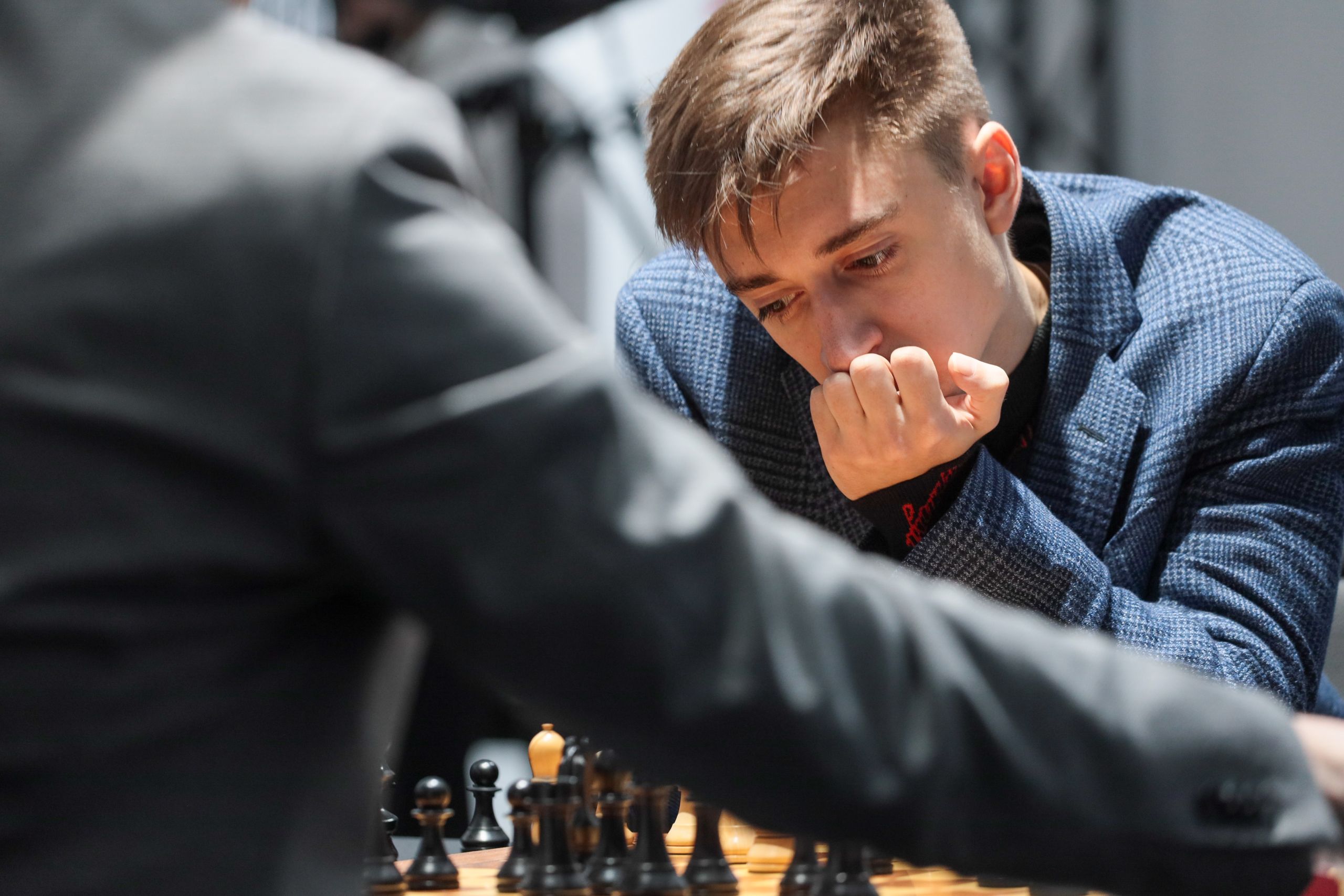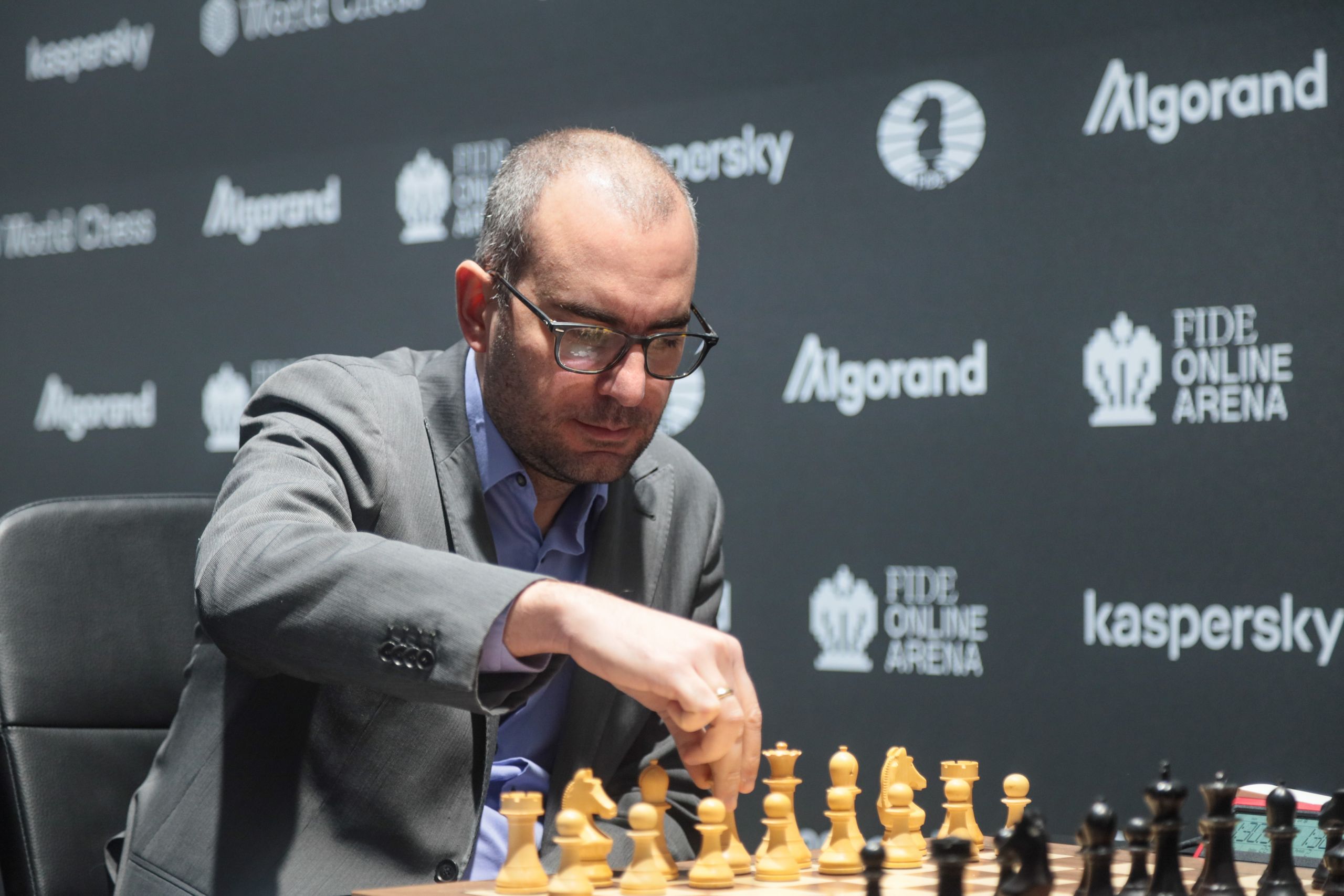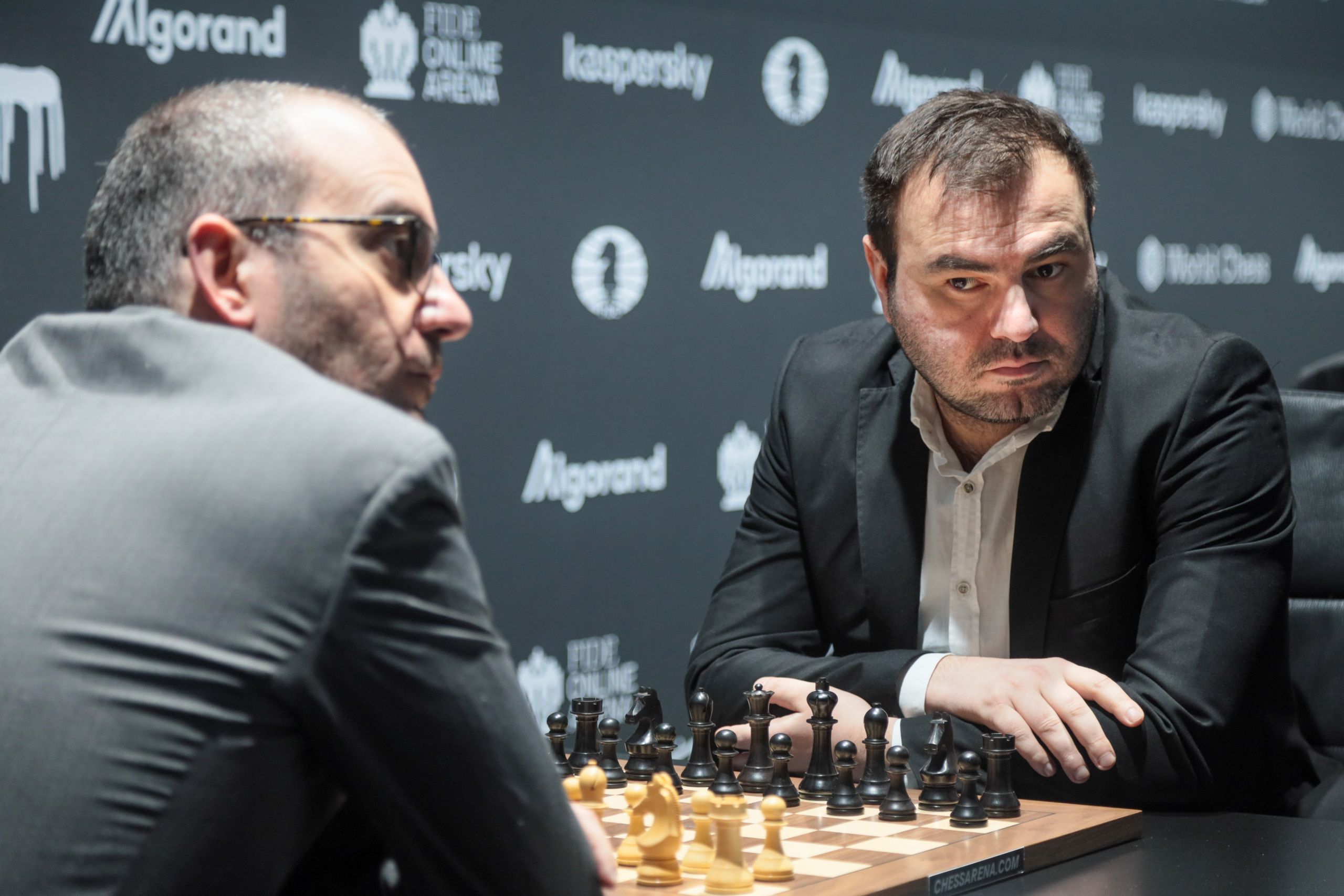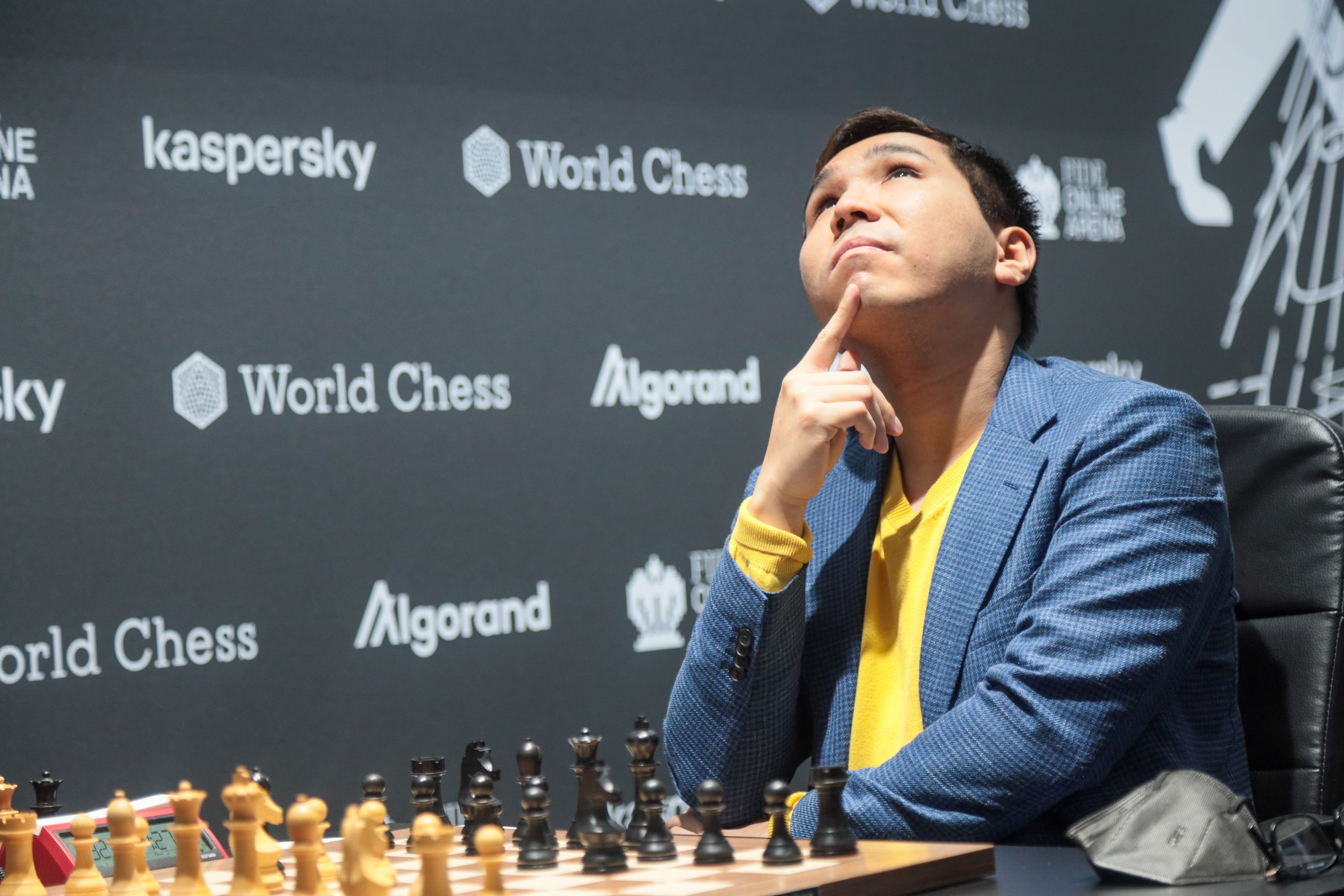Round 5 Report, Good day for the American players!
Half of the games ended with decisive results in Round 5 of the final stage of the FIDE Grand Prix Series organized by World Chess.
It was a very successful day for the American players as four of them, including Levon Aronian, Hikaru Nakamura, and Wesley So, defeated their opponents and thus all of them are leading in their groups. Hikaru Nakamura’s persistence is rewarded, as he won a difficult ending against Grigoriy Oparin and was caught in the lead of Pool A his main rival Levon Aronian, who outplayed Andrey Esipenko. Vincent Keymer earned a draw in his game against Daniil Dubov with precise defence. Leinier Dominguez and Shakhriyar Mamedyarov draw their game and remain in the shared lead of pool B.
Maxime Vachier-Lagrave sees his Candidates hopes evaporate after losing a messy game to Wesley So, who now shares the lead of pool C with his compatriot Sam Shankland.
Nikita Vitiugov and Anish Giri played out an uneventful draw, while Amin Tabatabaei saved a lost endgame against Yu Yangyi. Thus, all four players of pool D enter the last round in a tie, postponing the big fight for pool D victory for tomorrow.











Pool A
Andrey Esipenko was expecting to play against Hikaru Nakamura today and was shocked to learn he had to play against Levon Aronian 5 minutes before the start of the clock. He didn’t check the pairings carefully and gave a big advantage to Levon by playing with Black without any preparation. According to Levon, he had analysed this line in Nimzo-Indian Defense some time ago, knew the idea h4-h5 and remembered that Black is losing after inaccurate 12…c5. Andrey explained that his move c5 was an attempt to create counterplay in the center. However, it failed as the attack of White was too strong. After the best defensive move for Black 12...Bg7 White would have continued with 13.h5 Nh5 14.Nh7! with a strong attack. After 13...h6? Aronian didn’t give any chance to his opponent, who resigned in a lost position on the 23rd move.
Hikaru Nakamura and Grigoriy Oparin played a very interesting game in the Nimco-Indian. “At some point, I got very optimistic in the middle game. I thought I should be much better. It was so complex and after 25.g3 Qh1 I was not even sure if White was better,” commented Hikaru after the game. It seemed for the American player that Rf6 was an inaccurate move which helped White to change the rooks and win an extra pawn. Hikaru demonstrated a good technique in the ending even though Grigoriy could put more stubborn resistance at certain points. The players analysed a computer line 47…Bc8 with following Kh5 which could have given certain drawish chances for Black but came to the conclusion this line was not possible to find for humans.
Pool B
Leinier Dominguez was trying to improve his time management today and played faster compared to the previous rounds. However, it seemed to him it would have helped to think a bit longer in critical moments as he missed the clear advantage, which he got out of the opening. After 19…Bg5 White decided to go for the force line but underestimated Black’s counterplay after 21…Raf8 from far. Leinier wisely changed his original plans to capture the pawns of the Queen’s side due to an unpleasant blow Rf2! After 22.Qc5 in the game most of the pieces were traded and the players ended up in a drawish rook ending.
Daniil Dubov got a promising position in the Moeller Variation in the Spanish Defence. After 15 moves he had also 1 hour more on the clock and decided to sacrifice a piece in order to complicate the game, hoping to make it more difficult for Vincent Keymer to solve all problems.
“It was a bit of a contradiction. I could force a draw and I’m pretty sure I was not better and I didn’t want to play at all. And again, while you are at home you don’t want to play but then you come here and your opponent is down to 3 minutes. And then I thought, ok we would play three moves he would probably blunder and then we played 2 moves and I couldn’t repeat the moves any more and again I had to play and it was a very tricky game somehow,” said Daniil, who seemed clearly disappointed with the outcome of the game. The local hero Vincent Keymer showed great defensive skills and stopped White’s attempts to create a dangerous attack. Later on in the ending Vincent blundered a pawn, giving winning chances to his opponent again but was lucky to hold onto a draw in the end.
Pool C
Wesley So was surprised with the opening choice of Maxime Vachier-Lagrave and could not recall if Maxime had ever played Nimco-Indian with f3 earlier. Taking into account the tournament situation and the fact that it was the last game with White for MVL, the French Grandmaster decided to go for a sharp variation with g4 and was ready to take some risks.
The position was very complex and Maxime decided to break through with f4, which was later criticized by both players. Wesley found a very strong move 20…Qa4, with an idea c4 and since that moment Black had always had better chances in all variations.
“Of course with my opening choice today I knew it involved a very big risk component, so I feel there were things I could have done better, but overall it was a very strong game by Wesley,” said Maxime after the game.
Alexandr Predke didn’t get much out of the opening and decided to complicate the position by sacrificing a pawn. Sam Shankland kept the pawn and it turned out White didn’t get enough compensation. Alexandr lost track of the game, got into more trouble and eventually lost.
Pool D
Anish Giri was fully prepared for Semi-Slav, which appeared on the board after some opening transformations and quite comfortably reached equality. His opponent Nikita Vitiugov took an unambitious path, and after Black carried out a thematic c6-c5, a draw became inevitable. The players quickly traded most of the pieces and split a point in an opposite-coloured bishops endgame.
When asked to describe the game against Yu Yangyi in one sentence, Amin Tabatabaei said just one word: “A miracle”. Indeed, the Iranian GM miraculously escaped with a draw, facing almost imminent defeat. It all started very well for Amin, who introduced an interesting novelty as White in the Ragozin Defence as early as on move seven (7.a4), sacrificed a pawn and obtained more than sufficient compensation.
The first critical moment of the game came on move fifteen when Tabatabaei did not go for the most principled line 15.f3. Amin calculated the variation but erroneously evaluated the resulting position in which, despite being two pawns down, White has strong pressure.
As played, Black quickly equalized and even got a slight initiative but hardly more than that. Things changed drastically after White blundered with 29.Qxd5 and found himself on the verge of defeat. Yu was building up pressure with strong and precise moves and it seemed that nothing could help Amin. However, the Chinese GM fell into the last trap set up by Tabatabaei, and White forced a draw by perpetual.
The pairings for Round 6 are as follows:
Pool A:
Grigoriy Oparin (FIDE), 2674 — Levon Aronian (USA), 2785
Andrey Esipenko (FIDE), 2723 — Hikaru Nakamura, (USA), 2750
Pool B:
Vincent Keymer (Germany), 2655 — Leinier Dominguez (USA), 2756
Shakhriyar Mamedyarov (Azerbaijan), 2776 — Daniil Dubov (FIDE), 2711
Pool C:
Sam Shankland (USA), 2704 — Maxime Vachier-Lagrave (France), 2761
Wesley So (USA), 2778 — Alexandr Predke (FIDE), 2682
Pool D:
Yu Yangyi (China), 2713 — Nikita Vitiugov (FIDE), 2726
Anish Giri (Netherlands), 2771 — Amin Tabatabaei (Iran), 2623
Leading partners supporting the FIDE Grand Prix Series 2022:
Kaspersky as the Official Cybersecurity Partner;
Algorand as the Official Blockchain Partner;
Prytek as the Technology Transfer Partner;
FIDE Online Arena as the official Partner.


